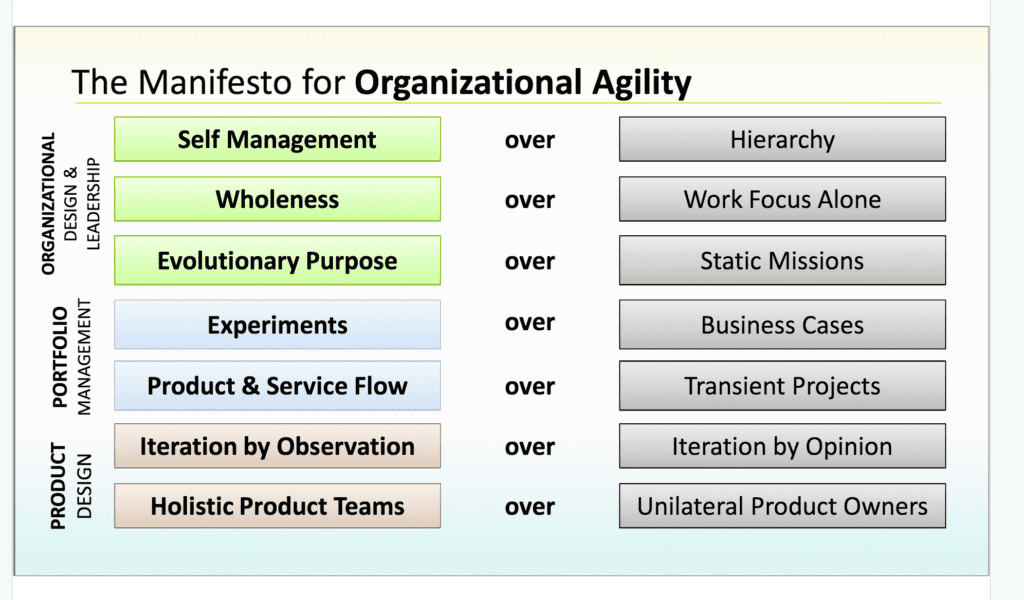To this end, I have written a draft, based upon the Agile Software Development Manifesto, which defined the facets of methods which called themselves “agile”. The “Manifesto for Organizational Agility” lays out the following principles, divided into three core areas:

(Arlen Bankston via SlideShare The Past and Future of Agility: Lean and Agile Trends and Prognostication from LitheSpeed)
Organizational Design & Leadership
- Self Management over Hierarchy – Self-managing groups allow for more localized decision making, which is faster, more motivating, and more scalable when done properly. Keep hierarchies as flat as possible, but support meaningful commitments through clear localized decision-making policies, dynamic role allocation, and pull systems with visible rules.
- Wholeness over Work Focus Alone – Support employees’ well being, motivation, growth and value orientation through organic, human work environments, flexible hours, workspaces, tools, approaches, and connection to a resonating purpose.
- Evolutionary Purpose over Static Missions – Agile organizations should be ready to deal with rapidly changing competitive environments and customer needs. Let missions and roles evolve organically, from within, and based upon demand, by encouraging experimentation and enhancing feedback loops.
Portfolio Management
- Experiments over Business Cases – To save money and improve creative focus, prototype and test ideas before funding them by applying agile portfolio management, and using techniques like the lean startup, UX approaches, and hackathons. Make this all operationally possible through devops-style integrated, flexible capabilities.
- Product & Service Flow over Transient Projects – To allow for faster starts and more knowledgeable and dynamic working groups, establish stable teams and feed them dynamic flows of work via versatile, standing teams, agile portfolio management and enablement of continuous delivery/deployment capabilities.
Product Design
- Iteration by Observation over Iteration by Opinion – Get feedback through real-life usage and empirical data, not just internal demos via continuous delivery, lean startup-style techniques and lean UX.
- Holistic Product Teams over Unilateral Product Owners – To drive better innovation and lessen handoffs, use the whole team to drive product design, with facilitative rather than dictatorial leaders, design thinking, collaborative design patterns, story mapping.
These are my thoughts, based on seventeen years of experience across industries, but organizations are complex entities, and there are other facets to consider. Those of you who have undertaken this journey may have other thoughts, and I’d love to hear them.
-Arlen Bankston
Join Arlen in shaping the future of Agility through the Agile Leadership Academy.


